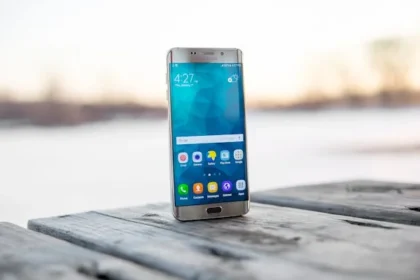Introduction
Online radio, once a niche technological experiment, has evolved into a mainstream medium that reaches millions worldwide. From its early days of buffering audio streams to today’s seamless smart speaker integration, the journey of online radio mirrors the evolution of the Internet itself.
Today, platforms like interworld-radio.net provide listeners with global access to streaming stations, curated content, and interactive experiences, all accessible from their browser or mobile device.
The Early Days: 1990s Pioneering Streams
The concept of streaming audio over the Internet first materialized in 1993, when tech visionary Carl Malamud launched Internet Talk Radio. It’s widely credited as the first online radio station to offer interviews with computer experts. However, with dial-up speeds and limited bandwidth, these audio files were often heavily compressed and prone to glitches.
Around this time, media software like RealAudio began enabling real-time audio transmission. As more users connected to the Internet, small hobbyists and tech communities started setting up their online stations using tools like SHOUTcast and Winamp.
The Dot-Com Boom: Internet Radio Expands
The late 1990s and early 2000s witnessed an explosion of interest in online radio. Platforms like Live365 and SHOUTcast allowed anyone with a microphone and a computer to create their station. This democratized broadcasting enables hobbyists and independent DJs to reach a global audience.
However, this period wasn’t without legal friction. The Digital Millennium Copyright Act (DMCA) of 1998 introduced new licensing rules for streaming music online. These laws shaped the future of internet radio by requiring online broadcasters to pay royalties — a challenge many small broadcasters struggled to meet.
Mainstream Goes Digital: 2005–2012
With faster broadband and growing internet literacy, online radio has transitioned from a niche to a mainstream medium. One of the major disruptors was Pandora, launched in 2005. Using the Music Genome Project, Pandora personalized listening by analyzing the characteristics of individual songs. This was a major shift from traditional radio’s one-size-fits-all model.
Apple’s iTunes Radio Directory also helped users find and stream stations from around the world. Services like iHeartRadio and Last.fm offered both curated and user-generated content, blending the traditional feel of radio with the flexibility of the web.
The Rise of Mobile & Smart Listening: 2013–2020
As smartphones became ubiquitous, so did mobile listening. Apps like TuneIn, iHeartRadio, and Spotify Radio made it easy for users to listen to online stations on the go. Meanwhile, smart speakers like Amazon Echo and Google Home introduced voice-controlled access to Internet radio, seamlessly integrating it into daily routines.
Listeners could now wake up to their favorite jazz station or get real-time news updates without lifting a finger. The integration of AI and voice technology has begun to change how users discover and interact with audio content.
The Podcast Boom & Its Impact
While podcasts are technically different from radio, being on-demand and not live, Their rise has heavily influenced the internet audio space. Platforms like NPR began offering both live radio streams and downloadable podcast content, allowing users to choose how and when they listen.
Online radio and podcasting now coexist, often crossing paths. For example, many traditional radio hosts also offer podcast versions of their shows. Wikipedia’s article on Internet Radio gives a comprehensive overview of how streaming platforms evolved in tandem with podcasting.
Monetization & the Business of Streaming
Initially run as passion projects, many online radio stations today operate as full-fledged businesses. Monetization models include:
- Ad-supported streaming: Dynamic ad insertion based on user data
- Premium subscriptions: Ad-free experiences, higher audio quality
- Sponsorships and partnerships: Especially for niche content or local stations
This hybrid model enables platforms like Pandora, Spotify, and iHeartRadio to strike a balance between profitability and user satisfaction.
Online Radio Today
By the 2020s, online radio has become a fully integrated part of the media ecosystem. Whether it’s niche jazz stations, indie talk shows, or 24/7 global news, users now expect high-quality, instant access to a diverse range of audio content.
Unlike traditional radio, internet radio isn’t limited by geography. A small community station in Chicago can now be streamed by a listener in rural Alaska or even abroad. Sites like interworld-radio.net are part of this revolution, offering users access to themed stations, genre-specific music, and live discussions often created by independent voices.
What’s Next: The Future of Online Radio
Looking ahead, online radio is expected to grow even more interactive and intelligent. AI DJs, voice personalization, and immersive experiences are on the horizon. Integration with virtual and augmented reality platforms could make radio a part of your digital environment, not just a part of your ears.
However, as with all digital media, concerns around data privacy, licensing, and algorithmic control will shape how online radio continues to evolve.
Wikipedia continues to document the timeline and technical shifts of this fascinating space, making it a valuable resource for in-depth reading.
Conclusion
From its humble origins as an audio experiment to its present role as a vital part of the digital media landscape, online radio has reinvented how we listen. No longer tied to a physical device or a specific location, today’s radio is global, personal, and constantly evolving. Whether you’re streaming music during your commute or tuning into a live political debate, you’re part of a revolution that started with a simple idea sound without borders.





